Dozens of plants have been smoked for pleasure and for other benefits since the dawn of civilization. The sheer number of known smokable herbs is immense.
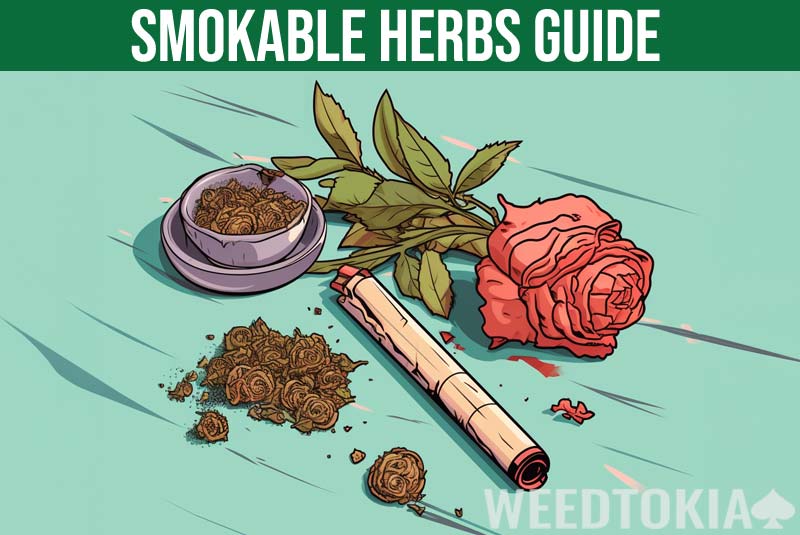
Today, we’ll be focusing on herbs that are the most popular, have the most research behind them, and are readily available. Most of the herbs on this list you’ve probably heard other people talk about before.
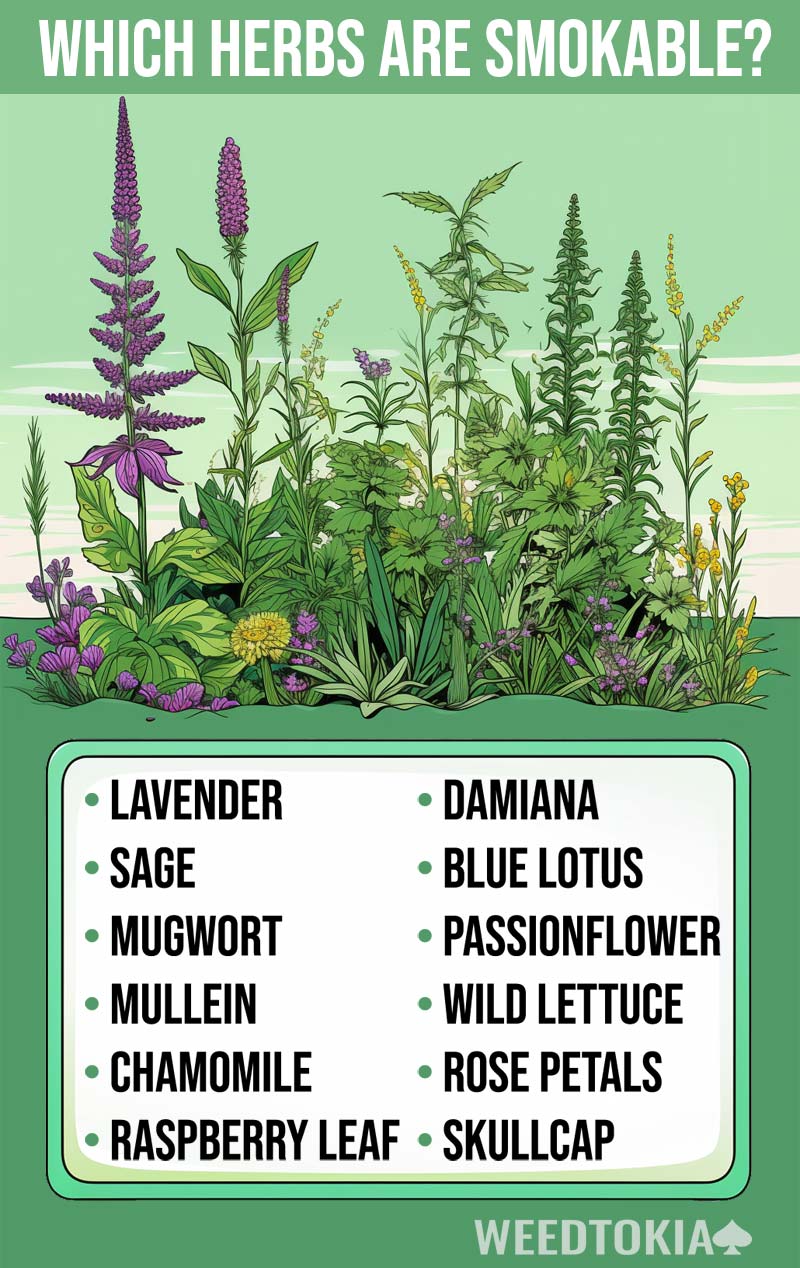
Public opinion has a surprisingly significant influence on scientific trends, so some of these herbs are also the ones undergoing new research, which means that we have lots of up-to-date, relevant information on them. We’ll tell you a little bit about each of these herbs, their effects, and if and how they can be safely combined with other herbs, like marijuana if that’s what you prefer to do.
1. Lavender
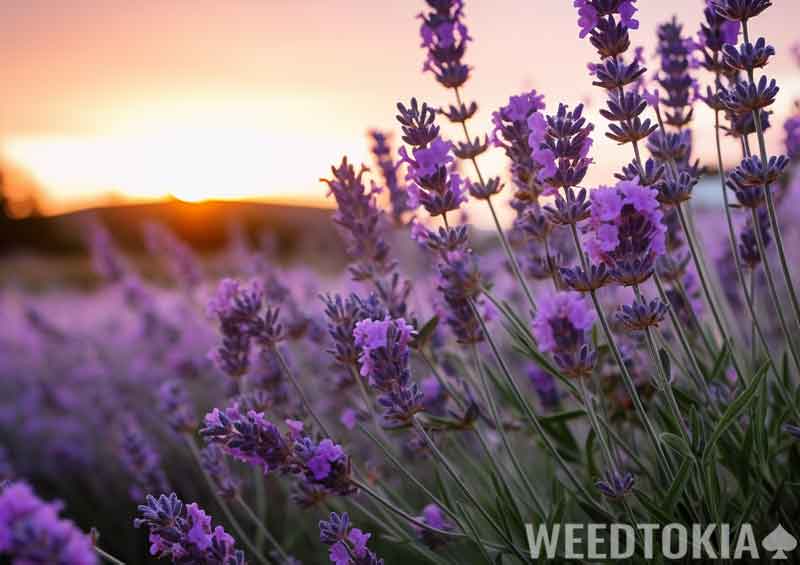
Lavender is THE “alternative” smokable herb. It’s been around for a long time and has seen ups and downs in popularity over the years, but recently, everybody and their brother suddenly became interested in trying it out.
A ton of smoking blends made with lavender were released, and fortunately, the current science agrees that the use of such blends can be beneficial. Smoking lavender is a topic so big it needs (and has) its own article, but we’ll give you the shortened version here.
Lavender Effects
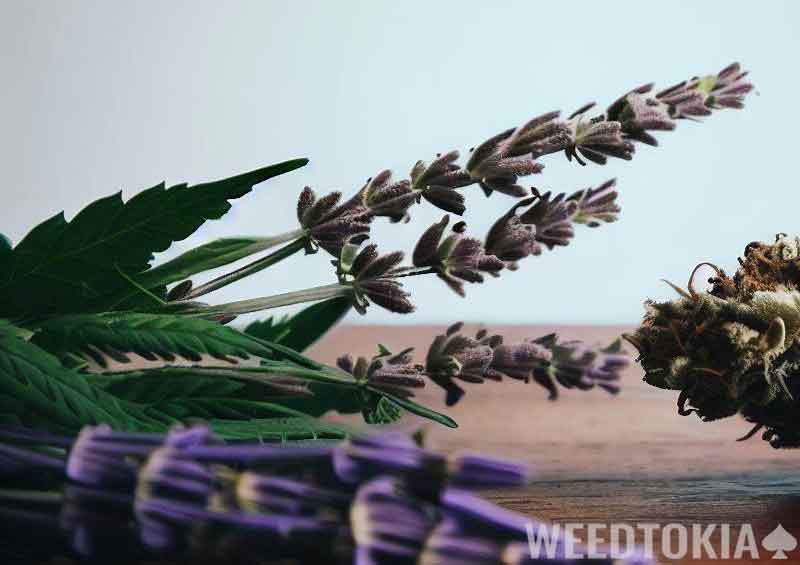
Cultures all around the globe have been using lavender, in every imaginable form, as a medicinal herb for thousands of years. Thanks to modern medicine, we have finally been able to prove the calming effects that lavender has always been known to cause, using studies like this one on lavender’s mental benefits and this one on lavender’s effects on the nervous system.
One of the main components in lavender which contribute to its effects is linalool, a terpene found in many aromatic plants and their essential oils. The effects of linalool, both as a constituent of lavender and on its own, have been studied pretty thoroughly in animals.
We know that linalool acts as a mild sedative and can help with sleep without having a negative effect on motor function, as demonstrated in this study. Linalool has potential benefits in terms of inflammation and pain, particularly inflammatory pain, as seen in this study and this follow-up published by the study’s authors.
Since lavender has a calming effect, you may get the most out of it by using it before bed. And, of course, smoking lavender will give you the gentle floral scent and taste of the flower, which is also enjoyable.
Smoking Lavender
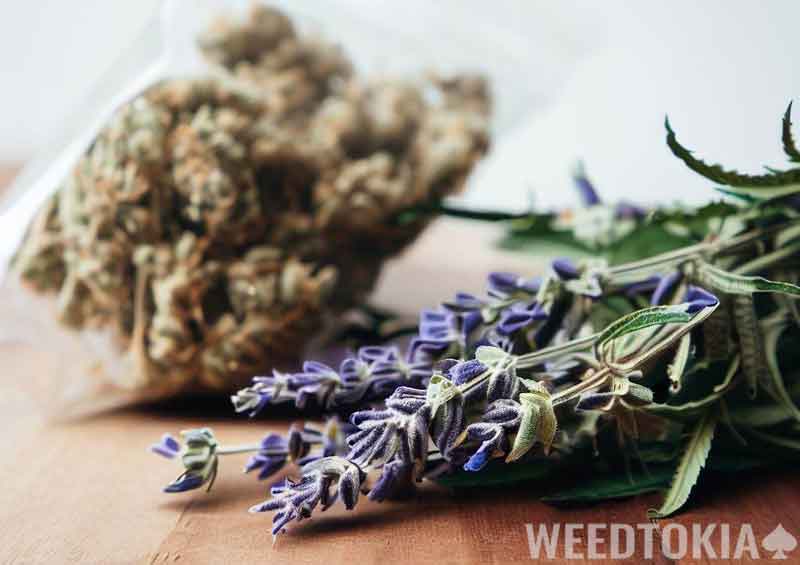
Lavender can be smoked in the same ways you would smoke tobacco or marijuana: in a cigarette, a joint, a pipe, or any other apparatus you like to use. It may not burn at the same rate as the herbs you’re used to smoking, so feel free to play around with how you pack it and which smoking apparatus you like to use in order to figure out the best routine for smoking lavender.
When you purchase lavender with the intention of smoking it, it’s important to pay attention to the source and the advertised purpose of the flowers. It may seem like all lavender should be more or less the same, but there are significant variations among the different species and the different cultivation practices. The types of lavender that are most commonly sold as decorations have attractive flowers but little fragrance and less useful compounds like linalool. Decorative lavender is also often treated with chemicals to preserve its appearance and lifespan, which are often not chemicals you want to ignite and inhale.
Lavender sold for cooking is much safer since it’s meant to be consumed, although it can still be sprayed with pesticides. The best thing to purchase, when you can find it, is lavender which is specifically sold as a smokable product. Failing that, you can also grow your own lavender to feel truly confident in the species you use and the conditions under which it was grown. There is some variation in the needs and blooming schedule of different types of lavender, but in general, it’s not a terribly difficult flower to grow, and once you get comfortable with it, it’s certainly more cost-effective to grow your own than to buy it.
Of course, while some people prefer to smoke herbs like lavender on their own, others add them to the more “conventional” herbs, like marijuana. It’s always important to check for potential interactions when combining things in this way, but fortunately, blending lavender and marijuana is generally considered safe. This means that if you’d like to smoke the two together, you can as long as you acquire them from a safe source.
Some marijuana companies offer smoking blends made with other herbs, including some with lavender, but you can also make your own smoking blend. While this will take a little more time and effort than buying a premade one, it will also allow you to customize the blend to your exact tastes.
We’ve already determined that there are no harmful interactions between lavender and marijuana, but what about the neutral or positive effects of using the two together? Well, one theorized result of combining marijuana with herbs like lavender is the “entourage effect.”
The idea behind the entourage effect, although not yet proven by scientific research, is that the cannabinoids, terpenes, and other chemicals in cannabis have a stronger effect on the body when other cannabis constituents are also present. If this effect is real, then it is present when lavender and marijuana are smoked together, thanks to terpenes like linalool being present in lavender. To be honest, we hesitate to recommend using something based on a claim that isn’t currently backed by science, but because so many cannabis users believe in the entourage effect, it was relevant to mention it here. And if you feel that you have experienced the entourage effect with other products, then you may very well feel the same boost in effects when smoking lavender with marijuana.
What we do know is that using lavender and marijuana together can create an increased sleep-promoting effect since such effects are caused even by using the herbs individually. Adding lavender to your favorite sleep-enhancing marijuana will give you a smoking blend that has more powerful calming effects than you’ve ever experienced before.
2. Sage
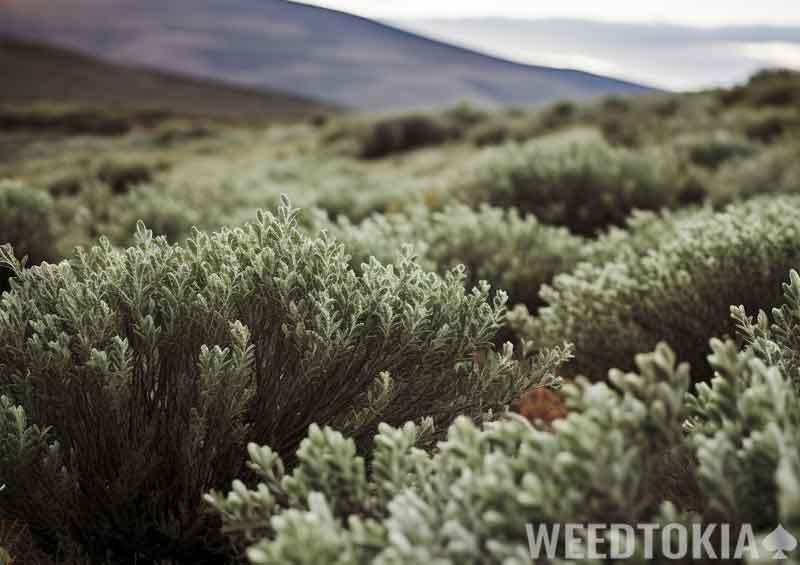
Many people feel that they are familiar with sage, and you may have used a plant that you considered to be sage in a dish or burned it in your home for a pleasant smell. However, few realize just how broad the term “sage” is; there are thousands of plant species from several different genera that we commonly refer to as “sage.” It’s likely that many, or even all, of these species, have been smoked by humans for various reasons throughout history, but for the purpose of this guide, we’ll be focusing on one of the most popular types: white sage (salvia apiana).
White sage, which is native to the Pacific coast of the United States, is used in the traditional foods, ceremonies, and healing practices of the Native American cultures which have inhabited that region for more than ten thousand years. These uses, and others, have been adopted by people all around the world, and white sage has seen a significant increase in popularity, especially within the last decade.
Sage Effects
As with lavender (and indeed, as with all plants that are utilized for their health benefits), we must look to the chemical components of sage in order to understand its effects. Two of the most significant phytochemicals in sage, as discussed in this evaluation and this profile, are the terpenes rosmanol and sageone.
Rosmanol, although commonly associated with rosemary, is a compound found in a variety of plants, including many types of sage. Many studies in the last few decades have confirmed that the use of rosmanol-containing plants, like sage and rosemary, in countless cultures’ folk medicine is based on genuine medicinal effects. It has a strong antioxidant effect and is significantly more useful than conventional synthetic antioxidants, as demonstrated by this Osaka City University study. Rosmanol also has anti-inflammatory and anti-tumor effects in the body, among others, as explored in this 2011 study by a group of food and nutrition scientists.
The benefits of sageone have not been explored for quite as long as those of rosmanol, but the results so far are just as promising. Sageone, like rosmanol, appears to encourage the death of certain types of cancer cells, especially gastric cancer cells. As this 2016 study indicates, this apoptosis-inducing effect suggests that sageone could be a promising agent and may have a place in future in the fight against cancer. Hopefully, as new studies continue to prove these benefits, sageone will be utilized more and more.
Smoking Sage
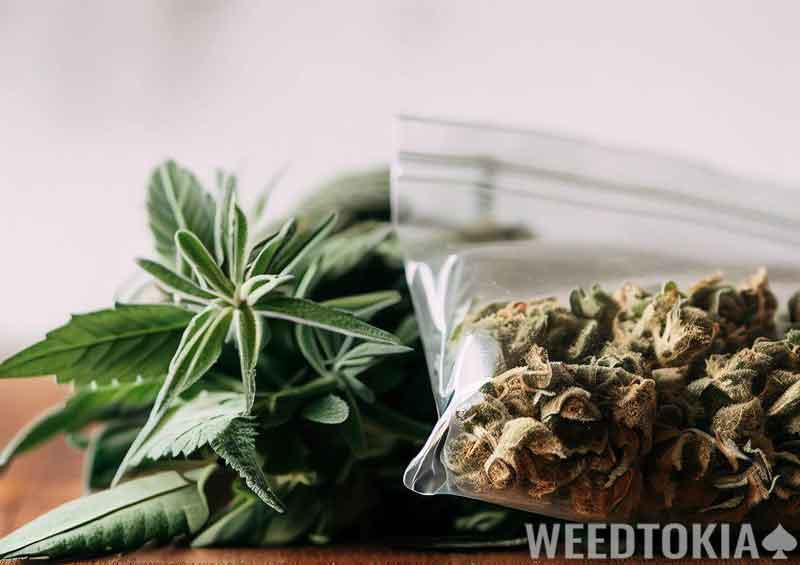
Sage has a very distinctive smell when burned in a room, and it has an equally distinctive taste when smoked on its own. If you intend to smoke sage alone, without adding any other herbs to the blend, be prepared for the fact that it may take a while to adjust to the taste. Some users also report sage as being particularly hard on the throat when smoked alone.
Smoking sage is reported to possibly improve the symptoms of the common cold and flu, as well as other minor illnesses that affect the respiratory system. Since several terpenes in sage are known anti-inflammatories, it’s possible that these effects are achieved by the reduction of inflammation in the sinuses and lungs. However, further and more specific research is needed to confirm this.
White sage is fairly cheap and easy to buy, but we suggest that you consider growing your own if you are able to. The trendiness of white sage as a smokable herb and incense has led to serious concerns about the endangerment or eventual extinction of the plant. By growing your own sage to smoke, you can enjoy its benefits without contributing to the over-farming of wild sage. It can be a bit tricky to get the hang of, but white sage’s ability to thrive in extremely dry conditions makes it relatively low-maintenance once you get it started.
Relaxing and mood-boosting benefits are often reported by those who smoke sage, although there isn’t sufficient scientific evidence to explain why this occurs. People who feel a calming effect when smoking sage alone, or even those who feel calmed by the scent of burning sage, may enjoy a stronger relaxant effect when combining it with marijuana. There are no known interactions between white sage and cannabis, so you can safely blend sage with anything from delta-8 flower to a powerful, Indica-dominant marijuana strain, depending on what level of effects you’re looking for
Although the existence of the controversial “entourage effect” (described earlier in this guide) is still unproven, we’ll continue to address it for those who are interested; the main terpenes found in sage are not present in significant quantities in cannabis, so the entourage effect is probably not among the reasons to smoke sage and marijuana together. That said, there are plenty of other reasons that the two complement each other, so don’t let the lack of shared terpenes discourage you.
3. Mugwort
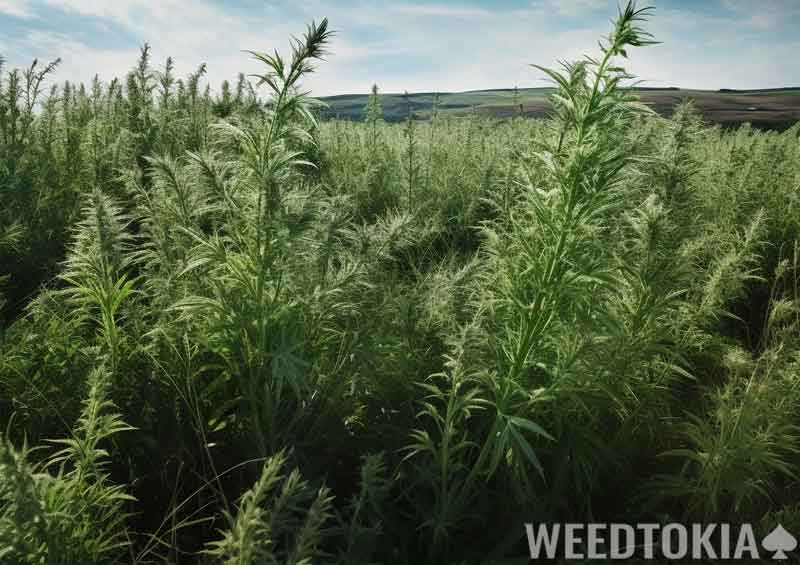
Mugwort is a plant native to Europe and Asia, and it has been used for both culinary and medicinal purposes by cultures across those continents for millennia. The term “Mugwort” is used to refer to a dozen or so plants in the genus Artemisia, but the Mugwort we’ll be talking about today is Artemisia vulgaris. This species, appropriately called “common Mugwort,” is the most widely used species in food and medicine throughout the world.
Mugwort Effects
Despite Mugwort’s long history as a medicinal herb, its individual phytochemicals and their effects have not been studied as thoroughly as those of herbs that are currently in vogue, like lavender. However, the general effects of the herb have been observed and studied for many years, and the current scientific literature largely agrees with the folk knowledge of its benefits.
For example, Mugwort has been shown to be an antioxidant, which means that it could help with conditions related to oxidative stress. A huge variety of diseases, especially those whose frequency is related to age, are influenced by oxidative stress. The development of cancer, Alzheimer’s, diabetes, and a number of cardiovascular diseases are all affected by oxidative stress, so antioxidants are very important. This journal article explores the antioxidant effect of Mugwort, and its potential uses, in great detail.
Smoking Mugwort
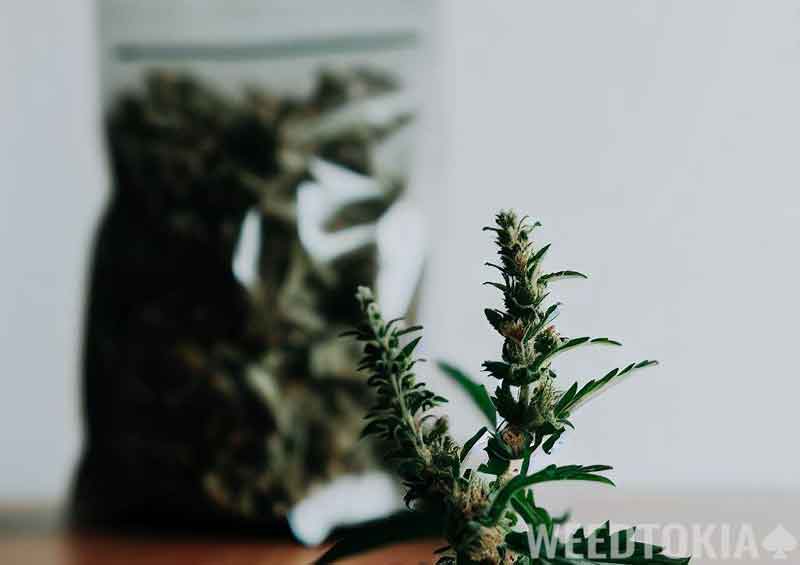
When smoked on its own, Mugwort has a gentle taste that’s floral and a little bit bitter. You can put Mugwort leaves in pipes, cigarettes, joints, bongs, or whatever else you like to smoke with. Some people find that Mugwort has a nearly psychoactive effect; for this reason, it’s often used before bed in order to improve both sleep quality and dreams. There are even people who claim that Mugwort can be used to encourage lucid dreaming. No concrete evidence for that claim exists, but since learning to lucid dream is all about altering your thought patterns, any habit that you find useful is worth trying.
Mugwort contains a compound called thujone, which is technically toxic. It takes a very high dose for negative effects to be noticed, and you’re unlikely to consume a dangerous amount of it from smoking Mugwort, but it’s just another reason to be careful and take things slowly when you start using a new smokable herb.
You should be doubly cautious if you have other plant allergies, especially to anything in the Asteraceae family, as people with certain allergies are significantly more likely to be allergic to Mugwort. Allergies to stevia, ragweed, tobacco, lettuce, birch, carrot, and sunflower are especially likely to occur alongside a Mugwort allergy. If you feel at all uncertain, test your reaction to Mugwort through another type of exposure before jumping into smoking it.
Mugwort and marijuana aren’t known to interact in any negative ways, but they also aren’t known to interact in any especially positive ways. This means that smoking them together isn’t necessarily any better than smoking them individually, but if you want to use both, there’s no harm in saving yourself time and effort by creating a smoking blend with the two of them.
If you’re interested in trying Mugwort for its potential influence on your dreams, you may want to consider lowering the amount of marijuana in your smoking blend; decreased dream recall is a commonly reported effect of smoking marijuana, so you may not remember enough to determine whether the Mugwort had any effect!
4. Mullein
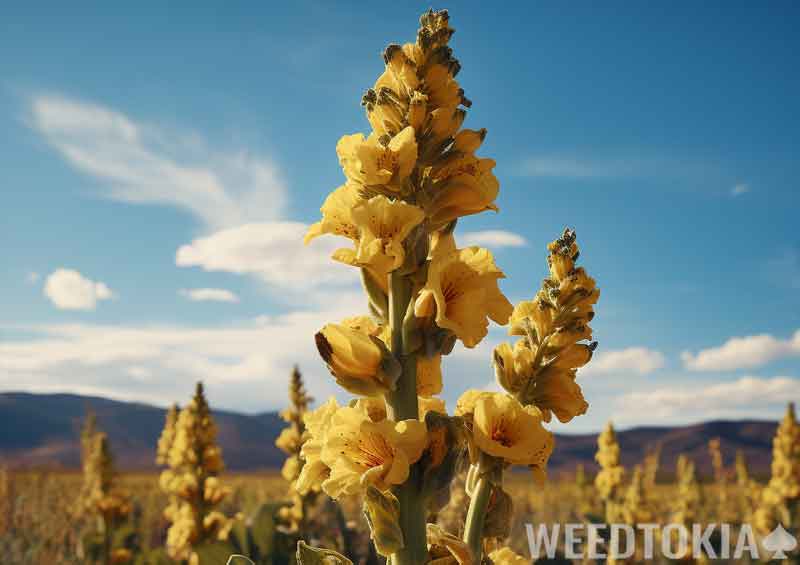
Mullein is native to various places in Europe, Asia, and Africa, but it has been successfully imported to and grown in North America, South America, and Australia. The plant’s ability to grow in such diverse conditions and habitats allowed it to quickly become a useful tool to cultures around the world. It has been used for everything from ornamental purposes to insulation to traditional medicine.
Mullein Effects
For some time, the scientific world was skeptical of the purported benefits of Mullein in traditional medicine. Fortunately for champions of those folk medicines, a number of studies have now come out which support the idea of a genuine medicinal use for Mullein, but the case is still not totally conclusive. You can read about the relatively recent advances in the science surrounding Mullein in this paper.
Some of the observed effects of Mullein include antibacterial activity, as shown in this study, antiinflammatory activity, as shown in this journal article, and even reduction of the negative symptoms associated with tobacco smoking. We’re a long way from the approval of any drugs utilizing Mullein, but even so, the plant will offer a host of medical uses if folk knowledge continues to be proven correct by scientific research.
Smoking Mullein
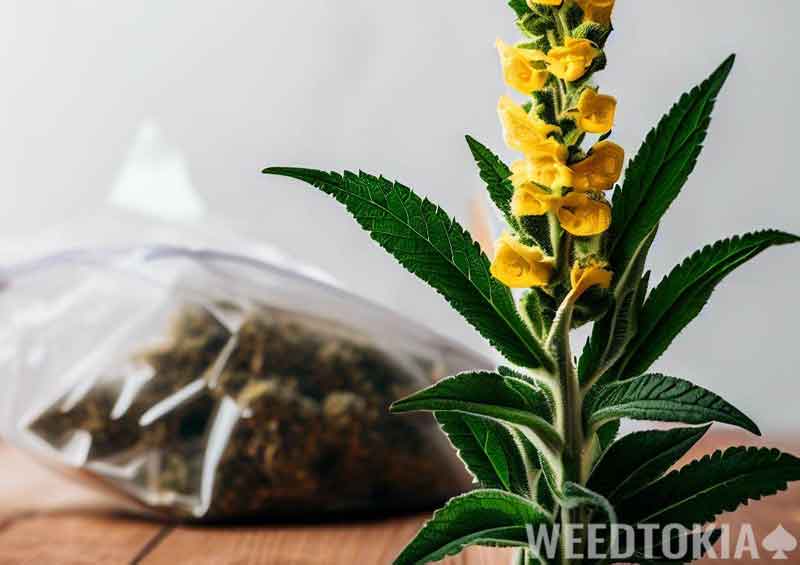
Since many of the reported benefits of Mullein involve soothing, clearing, or even repairing the lungs, smoking is often the preferred way to use Mullein for the lungs. We won’t endorse this too strongly until there is more evidence for it, but so far, there don’t appear to be any reasons to avoid this use of Mullein.
Mullein is a gentle herb, often added to smoking blends to make them easier on the throat and lungs, and you should have no difficulty with it when smoking it alone. There are no known side effects caused by smoking Mullein, aside from possible but unlikely allergic reactions. If Mullein is a completely new herb to you, it might be wise to test your reaction before smoking it, but smoking Mullein is completely safe for most people.
Mullein is not psychoactive and doesn’t interact with cannabis in any strong ways. This makes it a great addition to any marijuana smoking blend, as it won’t steal the show from any other herbs and can complement just about anything. Your smoking experience is likely to be smoother with Mullein in the mix, and you may even experience some of the benefits described above.
The texture of Mullein can be a bit difficult to roll, so you may want to use something other than joints or cigarettes to smoke your Mullein/marijuana blend. This may also make it easier to use premade smoking blends that include Mullein than to add Mullein to the blend yourself.
5. Chamomile
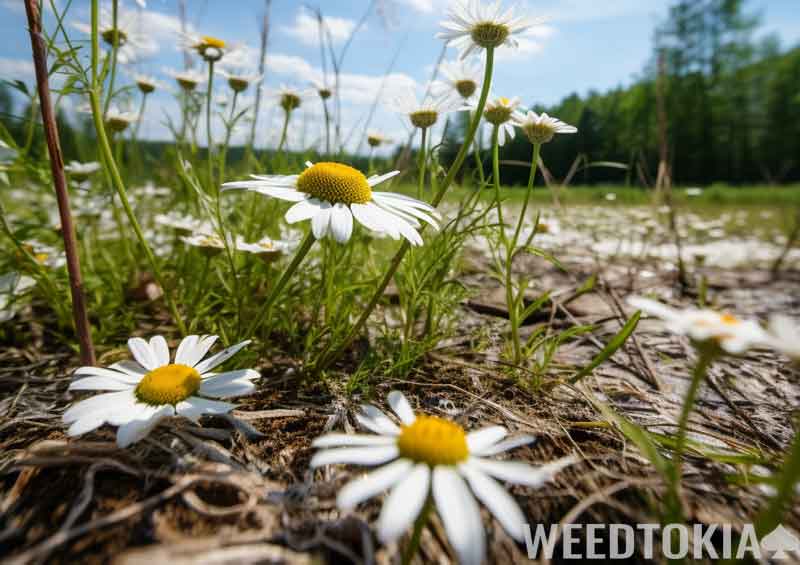
Chamomile belongs to the Asteraceae family and is native to Western Europe. The plant has now spread all over the world, and it may be the most common plant on our list. It’s primarily used as a tea for its therapeutic properties.
Chamomile tea has a reputation for its antioxidant and mood-boosting properties. If a plant is safe enough to drink after boiling, it’s most likely safe to smoke too. In some studies, Chamomile was even linked to a decrease in mortality.
Smoking is not common, but it is a smokable plant. Smoking Chamomile is typically done in a way that is more akin to aromatherapy. Many cannabis users do add to their smoking blends for an extra relaxant effect, and so far, no serious negative effects have been observed.
Chamomile Effects
The effects of Chamomile can be felt on the body, and the muscles in particular. It is akin to a lighter version of CBD oil because the effects are only on the body and not on the mind. You feel your muscles relaxing, and you feel slight pain relief.
The smoking effects can vary from person to person. When I smoked it, I first noticed the smell of adding to the flavor of marijuana, which made the experience better. I also felt the joints in my legs relax a bit, and they felt painful before.
It didn’t crash my energy or put me to sleep like other plants did. I felt the same levels of energy as before smoking it. But you can get the same effects from drinking tea. So the only benefit you’ll get from smoking it is the better smell.
Smoking Chamomile

Chamomile can be smoked in a joint or a cigarette mixed with tobacco. To get the potent effects of, break up the follow and place the yellow bits in the mixture. You can smoke it freshly picked or dry it out to make the aroma potent.
Smoking the plant will not get you high or give you any mental benefits. It made my room smell like Chamomile and relaxed my muscles a bit, but it wasn’t a strong effect the way I’d experienced from an Indica cannabis plant.
If you want to get high, you’ll have to mix it with marijuana. And if you’re a tobacco fan, you can make the smell of raw tobacco feel less harsh with it.
6. Raspberry Leaf
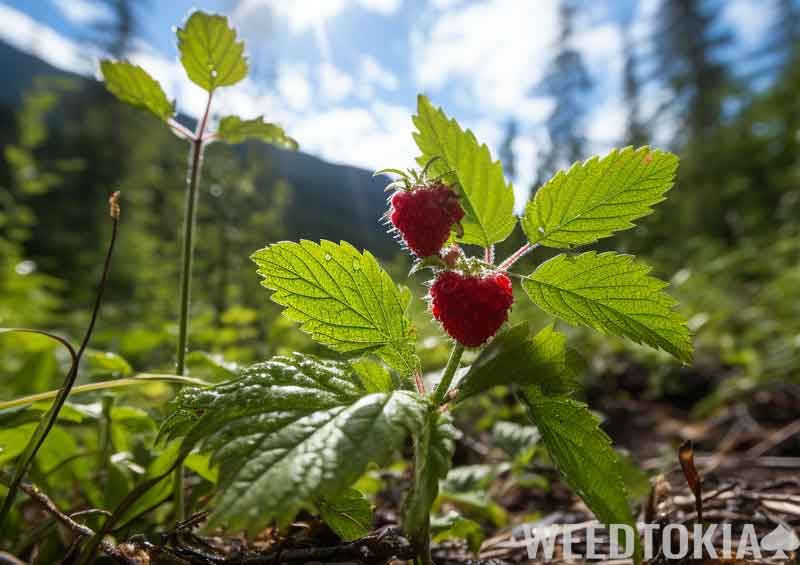
Raspberry is grown in all temperature climates on the planet, and it is among the most common fruits. Raspberry belongs to the genus Rubus species, and they are a sub-group of the Rose family.
They taste great, look great, and many marijuana flavors integrate the raspberry smell. Raspberry needs sun to grow and thrives in warmer climates with decent rainfall; the likes you’ll find in the United States and Europe.
Most people don’t associate Raspberry with smoking, but you’re not smoking the actual fruit; you’re smoking the leaf. Raspberry leaves are the dark green leaves you see in the picture above. Those can be lit on fire and smoked.
Raspberry Leaf Effects
Raspberry Leaf has relaxing effects when smoked. It is a known antioxidant and brings beneficial nutrients to your body that can help relieve stress. If mixed with marijuana or tobacco, the Raspberry aroma will be dominant.
Smoking Raspberry Leaf was a mild and relaxing experience for me. I dried it out for a day and then ground it in my joint. It actually felt like smoking Raspberry Kush because the smell was similar.
You might get the munchies and want to eat fruit, especially if it’s the summer months when you’re smoking, and your body is craving hydration/sugar. You’ll want to keep a box of Raspberry nearby to satisfy those cravings.
Smoking Raspberry Leaf
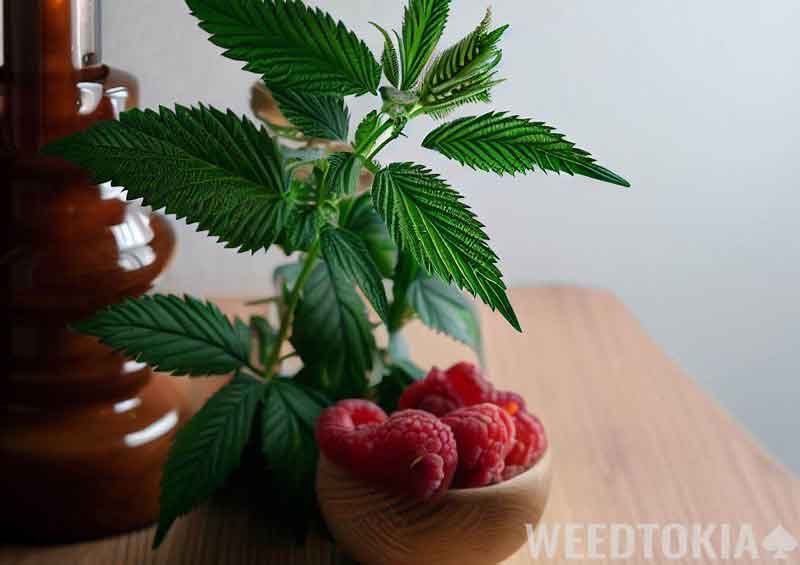
To smoke Raspberry Leaf, you have to take the leaves apart and dry them out. Once they are dried, break them up into small pieces and insert them in a smoking pipe or a joint.
I tried smoking the leaf raw, and it burned a bit slower, so I decided to dry it out first. It’s a pretty hard leaf so it actually makes your joints last longer. If you’re blowing through your weed stash in a few days, you could mix it in with this to save money.
The aroma is the most pleasing out of all I tried (right up there with Lavender), and I’m not surprised that Raspberry-scented strains are popping up. This is one of my personal favorite smokable herbs because I love the smell and find smoking it very relaxing.
7. Mint
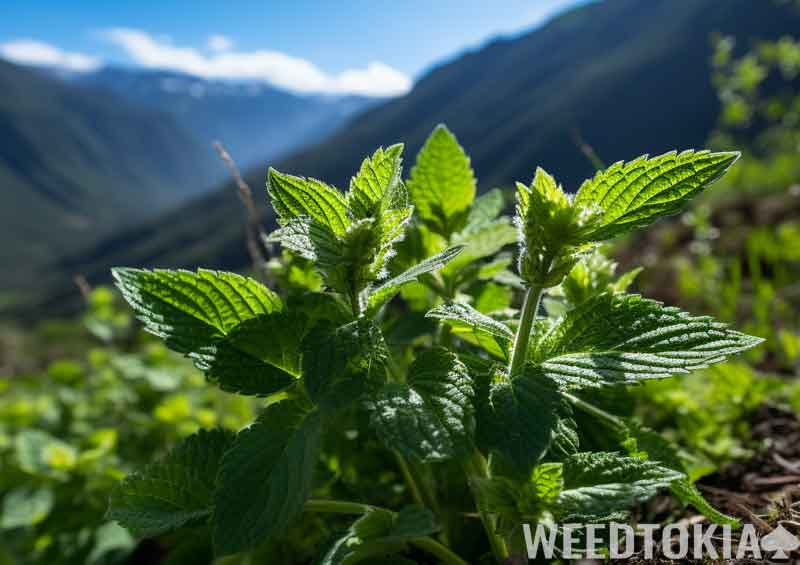
The average person associates Mint with chewing gum, but did you know it’s a smokable plant? Mint originates in Europe, but the plant has spread worldwide and is known for its effects as a medicinal herb.
It’s got that “minty” flavored cigarette taste when you smoke it, and this means it can open up the lungs. Mint aromatherapy is used by doctors for patients with shortness of breath. There aren’t any studies on the effects of smoking mint yet, but there is anecdotal evidence.
One thing you’re guaranteed to get out of your mint smoking experience is the flavor.
Mint Effects
The effects of peppermint are felt on the breath. When I smoked it, it felt like it was opening up my lungs, and I was able to take deeper breaths. I also felt my neck opening up, and it made the vapor flow in and out faster.
I didn’t feel any mental or bodily effects. It felt like the only effect was the actual aroma and the way it changed the smell of my weed. Don’t expect to get high on Mint and/or feel any relaxation benefits. You can only get that if you mix it in with other plants.
Smoking Mint
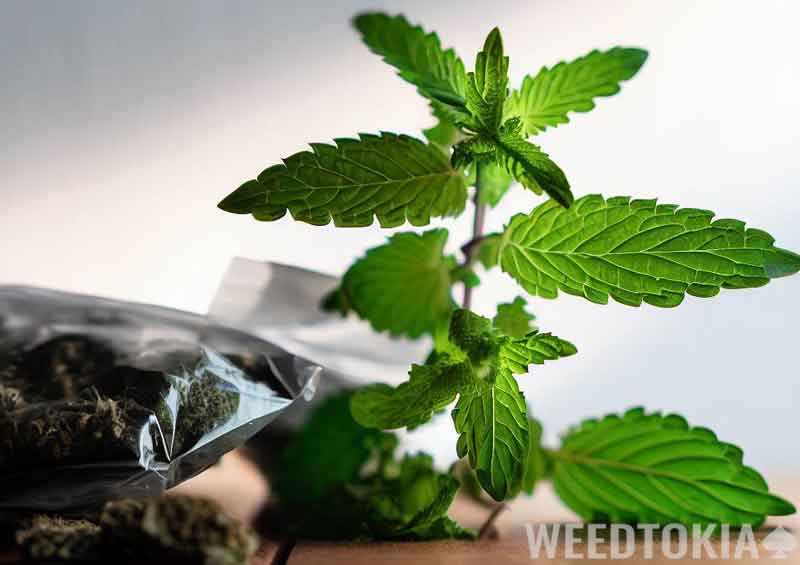
Mint is smoked raw without drying, but it has to be ground, similar to marijuana. Once you grind the mint, you can mix it in with a joint or mix it with tobacco in a smoking pipe. Light it up and take a long puff, and you’ll feel the minty flavor creep in.
The biggest benefit of smoking mint is that it’ll make your weed last longer. Instead of rolling all your weed up at once, you can roll half and use mint for the other half. This will slowly get you high, and you’ll be able to smoke longer.
If you smoke it with tobacco and you’re sensitive to the smell of tobacco, you’ll get that minty freshness, and the smoke won’t be as harsh.
It’s also possible to mix in Mint with weed and tobacco in a joint. Make sure they’re all nicely ground and mix them in together. The tobacco will release dopamine, the weed will get you high (in 10-20 minutes), and the Mint will make the vapor smell better and open up your lungs.
8. Rose Petals
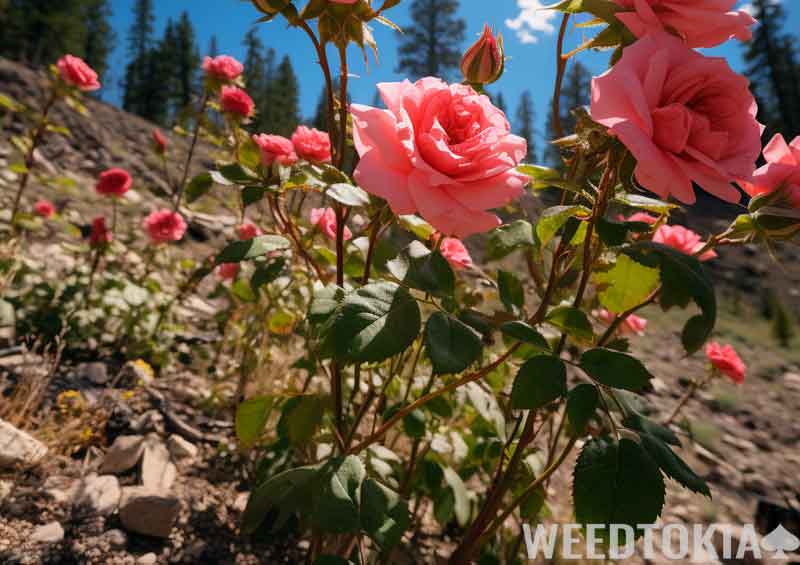
Most people associate Roses with romance, but did you know you can smoke Roses? Rose petals are the parts that comprise the flower, and they are smokable. It has one of the most beautiful smells, and it’s healthy to smoke.
People have been smoking Rose petals for hundreds of years. It grows all over the world, from the Americas to Asia, and it’s not uncommon to stumble across a wild Rose field in the countryside. That means unlimited smoke for you.
Note: Read our guide on smoking rose petals the right way.
Rose Petals Effects
Rose Petals can make you feel relaxed, less stressed, and happy. The effects are mild but positive. Smoking Rose petals will not get you high, but you will feel relaxing effects as soon as you take a puff.
The effects kick in immediately, and you don’t need to wait 10-20 minutes like with weed. It’s akin to smoking tobacco, except it’s safe for your health. Rose petals, in particular, smell great when they’re mixed with marijuana.
Rose petals exude a beautiful floral aroma when smoked. If you can imagine the smell of a Rose in vapor form, that’s what you’ll get. The room will smell floral, and the marijuana will add that sweet aroma, so you can smoke it with your girlfriend.
Don’t expect to get high or even feel a strong dopamine rush like you would with tobacco. All you’ll feel is a calm relaxing state of mind. If you like to meditate and feel present, smoking them will help you get in the moment.
Smoking Rose Petals
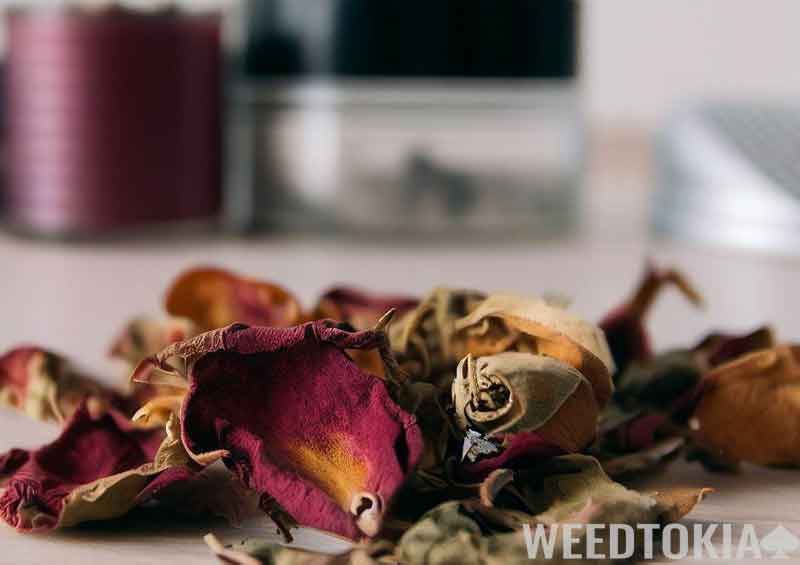
Rose petals must be fully dried out before they’re smoked, or they won’t be flammable. They have inner hydration that makes them difficult to set on fire, but once they’re dried, they can be ground and mixed with a joint or a cigarette.
It’s easy to dry them out in the sun. Once you remove them from the Rose flower, they’ll only need a few hours to fully dry out. They’ll change to a yellowish color, and after that, they’re safe to smoke. If you want them to be even more dried out, you can let them dry for a few days. That might give you more potent smoke.
I really like how Rose petals never made me sleepy nor artificially boosted my energy. I feel the same as I felt before I smoked it, except I enter a relaxed, meditative state. You can smoke them as an experiment and mix them with your weed to smell a beautiful aroma.
9. Damiana
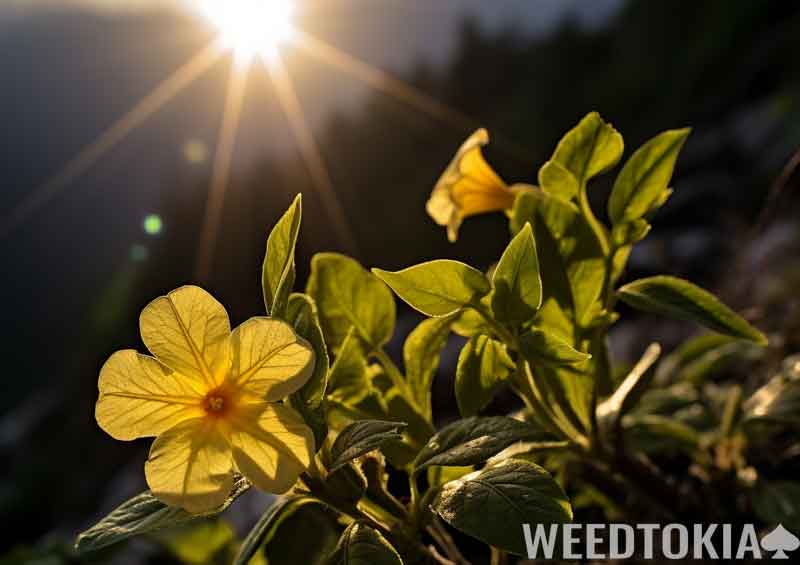
If you ever ran into a big beautiful yellow flower on your hike in nature, it might’ve been Damiana. Damiana is a smokable herb that was used as an aphrodisiac by North American tribes for centuries because it smells very good. If it made its way to Europe, it probably would’ve been more popular.
It’s one of the prettiest plants (aside from Rose) and only grows in North America. You can find it from the southern regions of Texas all the way down to the Caribbean, where it thrives in the warm climate. All the Central American countries have it too.
Damiana Effects
You’ll notice that the smell is potent and smells very “floral” when you light it up. It feels a bit bad to light such a beautiful flower on fire, but the pleasant aroma makes up for it, and it starts making you feel good instantly.
I felt this super calming sensation, similar to the after-effect of tobacco. It wasn’t super hard-hitting, and I’d say the effects were mild (plus they kick in later). If you want a gentle plant that won’t hit you super hard, this is a great option.
It’ll ease your tension, and it’ll make your room smell better. You’ll feel relaxed but don’t expect to get high or feel strong effects from this plant. If you’re used to smoking tobacco or other potent plants, you might not feel anything at all.
Smoking Damiana
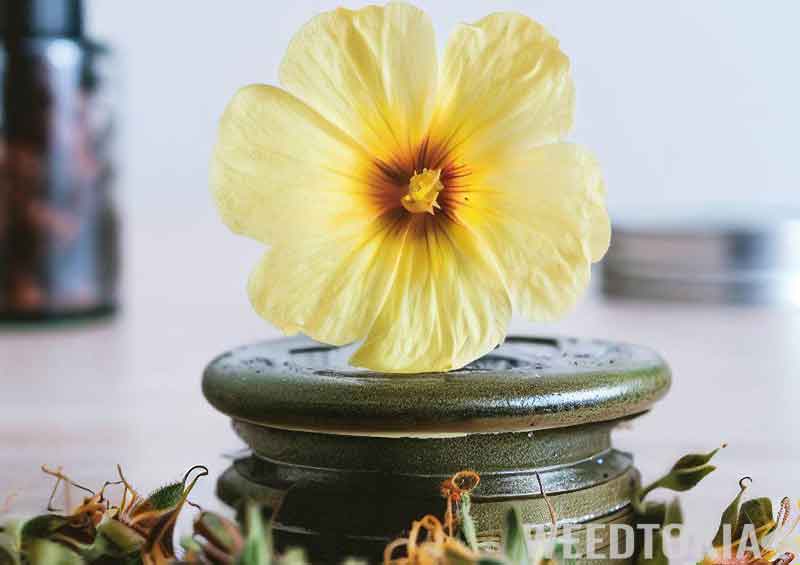
Damiana should be tried before it’s smoked, and you can stuff it inside a joint, smoking pipe, bong, or cigarette. I really like smoking it with a mix of tobacco and weed by rolling it inside my own cigarette because it’s the simplest option.
You can get some cigarette filters and rolling papers, then stuff it in with tobacco and smoke.
You can even smoke the flower raw without drying it out. Drying will make it a bit more pleasant to smoke because it’ll burn longer, and you won’t have to re-light it every time.
It’s about finding the right blend for you. If you want to add flavor to your weed-smoking experience, sprinkling in some Damiana could make the smell nicer. If you really want a hit of dopamine, you could try more euphoric strains or mix it in with tobacco.
10. Blue Lotus
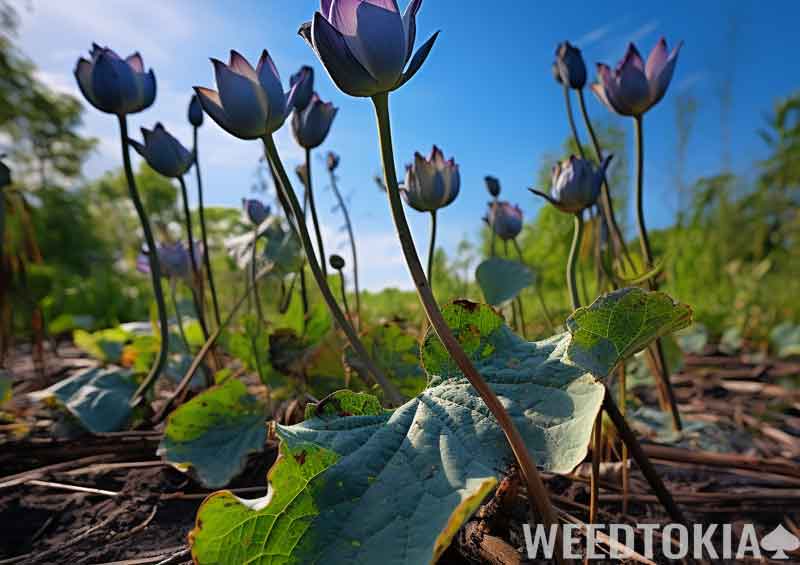
Blue Lotus (also known as Egyptian Lotus) is a beautiful plant with a purple appearance that mostly grows in Egypt and parts of Western Asia. This plant can be a bit difficult to obtain in the Western world, but if you get a chance to visit its native region, you should definitely smoke it.
The natives in Egypt use Blue Lotus to make tea, but they also have a tradition of smoking it for thousands of years. The effects are powerful when smoked, so this is not a lighter plant like Damiana that won’t hit you hard.
Blue Lotus Effects
Blue Lotus has a powerful sedating effect. When I smoked it, I felt euphoria creeping inside my body, and my dopamine went up instantly. This feeling is only comparable to smoking a cigarette with raw tobacco. The euphoric feeling lasts while you’re smoking the plant but then goes away and makes you feel relaxed.
It’s got this transition from euphoric to relaxing, but the whole experience is sedating, and it’s not for novice smokers. I was told by a friend in Egypt that they use it as a type of medicine to relax and gather their thoughts. It’s also their most popular tea.
Smoking Blue Lotus
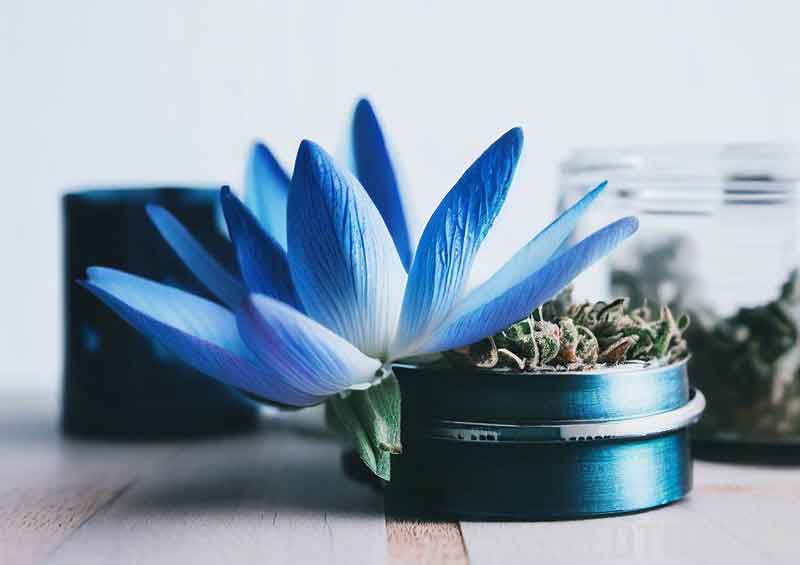
Blue Lotus flowers can be smoked directly without drying by stuffing them into a smoking pipe or joint. They can also be smoked inside a bong or hookah.
I prefer the joint option because it’s very easy to mix the two in, but I wouldn’t recommend doing that if you’re traveling to the Middle East, where it’s illegal. Bring the flower back home and smoke it there.
The locals in Egypt like to mix this in with other smokable herbs like Lavender to add to the smell and make it a super pleasant smoking experience. You can definitely mix it in with weed and feel the euphoric benefits of the plant itself and the weed strain.
The aroma is not very potent, but it’s also not inconspicuous. Don’t overdo it, and think you can smoke too much of this stuff because it’s not weed. It can hit you harder than you expect, so always start with a small amount (i.e., add a tiny piece to your joint) and see how you tolerate it.
11. Passionflower
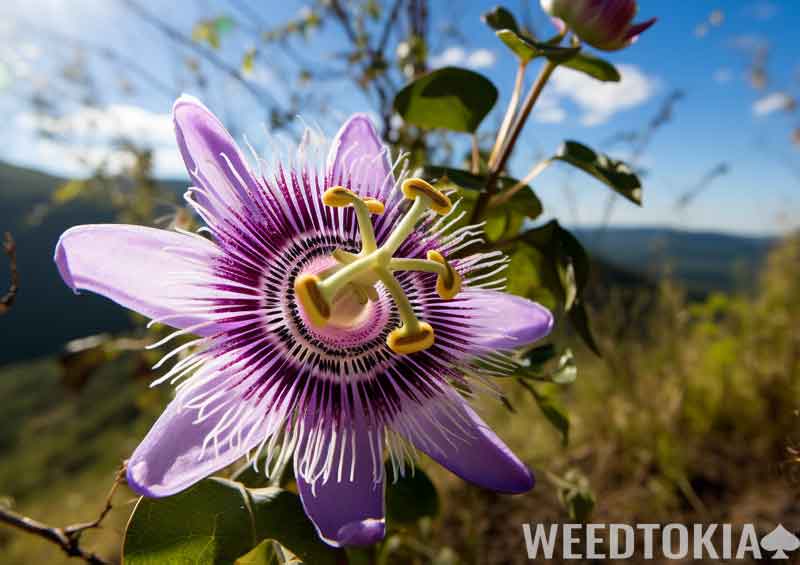
Passionflower is one of the most beautiful flowers I have ever held in hand. It’s known as “Maypop,” it’s very similar in appearance to Blue Lotus with beautiful purple stripes.
This flower is thought by many to be healthy to smoke, and it’s even used for skin problems.
If you need a safe plant to smoke that smells good and has medicinal benefits, this is a good go. It grows in the forests of Mexico and Central America, and it’s easy to obtain Stateside.
Passionflower Effects
When smoked, the flower has a calming and sedative effect, similar to an Indica strain. Expect to feel a meditative state followed by a desire to sleep.
I first smoked it with OG Kush in a joint, and it hit as soon as I took the first puff. It sat me back in my chair, and I started taking deep breaths. It brought me to a certain tranquility that felt like being high, and then the weed kicked in.
My heavy thoughts suddenly disappeared, and I felt relaxed. I’d recommend Passionflower to people who struggle with anxiety or have sleep problems. It’ll set your mind free and make you feel relaxed at the highest level.
You could also fall asleep easier smoking this (especially mixed with weed), so it’s best if you take it at night before bedtime. Even if you mix it with an energetic Sativa strain, you’ll still be able to go to sleep. If you’re a tobacco smoker, the smell will complement your tobacco.
This plant is healthy to smoke, and you can also buy oil extracts made from it to apply to your skin.
Smoking Passionflower
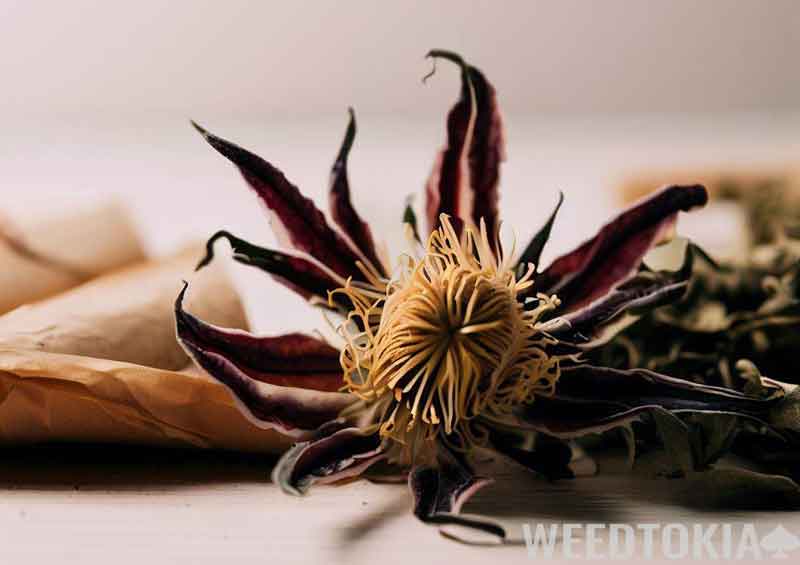
Passionflower can’t be smoked raw; you can only pick the flower apart and dry it out. After it’s been dried out, you can grind it and roll it in a joint. You can also put it inside a smoking pipe and mix it with tobacco.
If you want to take it a step further, mix it with your weed in a bong to get the ultimate high. My favorite way to smoke Passionflower is to mix it with tobacco on rolling papers and smoke it as a cigarette. It relaxes me before bed, and I sleep like a baby.
There’s also the option to mix it in with other smokable herbs like Rose Petals and enjoy a very powerful aroma. You don’t need to get high smoking it, and the effects are similar to smoking a low THC strain.
12. Wild Lettuce
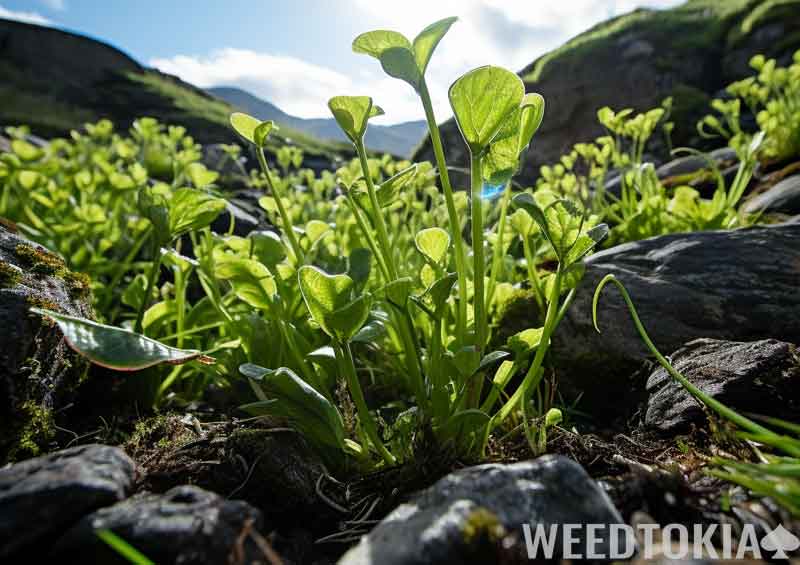
Wild Lettuce is not the lettuce you eat at home. It’s a rare plant that grows in the riverbanks of Europe, the Middle East, and southern US states. This plant is also known as Lactuca Virosa, and it has a reputation as a pain relief medicine. When smoked, it has mild effects.
Despite its association with lettuce, eating Wild Lettuce is not recommended for humans. If you eat it, you can face ingestion problems or feel jittery. It’s kind of like taking three shots of espresso at once. People with latex allergies shouldn’t touch it because it can cause skin irritation.
So, you should basically leave eating Wild Lettuce to the turtles and smoke it if you come across it. Smoking is less dangerous than eating it because you’re not exposing it to your digestive system.
Wild Lettuce Effects
The effects of lettuce are very mild when you smoke it, and it’s one of the most predictable plants. I smoked it once and felt my body relax, but it wasn’t anything spectacular. It feels the same as smoking low-quality weed.
It can only amplify the effects of weed, and it goes well with relaxing strains from the Indica variety. I’d recommend taking this with sleepy strains like Hindu Kush so you get the benefits of both.
Like other relaxing herbs, it’ll put you to sleep easily. Don’t smoke this while you’re out on a hike and have five miles left back to your car. You might lose energy and fall asleep on a hill.
Smoking Wild Lettuce
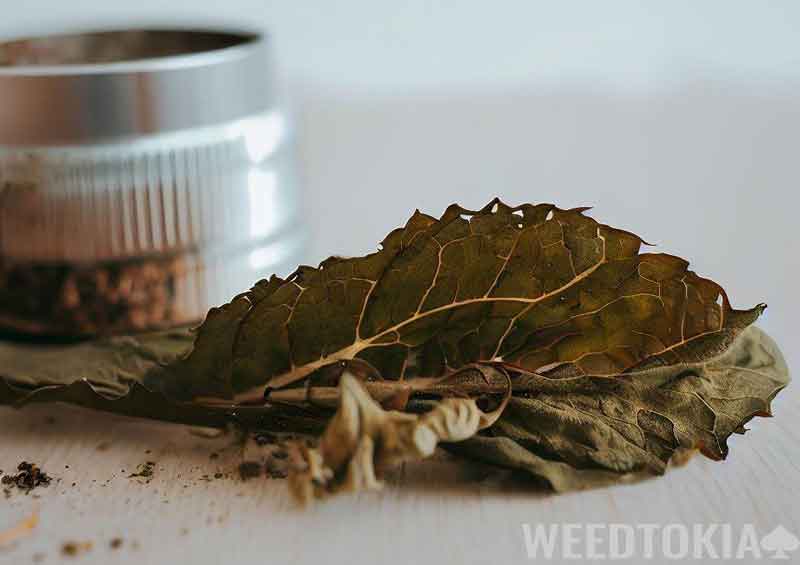
The only way to smoke Wild Lettuce is to fully dry it out. Cut off the root and leave it to dry on a table in your backyard for a day to be safe. Then place the dry piece inside your smoking pipe for the best experience.
You’ll be smoking leaves here and not flowers. That means it’ll be harder to dry it out and grind it, so you’ll have to be patient with it. You’ll also need a large smoking pipe to contain the pieces and light them on fire. It’ll be difficult to roll it inside a joint, but if you’re really determined, you might pull it off.
13. Skullcap
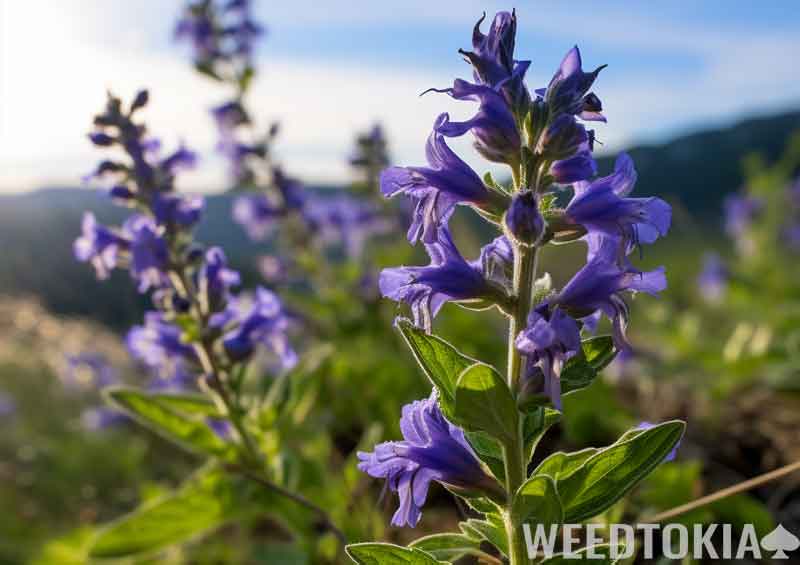
The name Skullcap might seem scary, but this plant won’t end you. It might give you a new lease on life if you try smoking it. The plant goes by the name of Scutellarin and looks very similar to Lavender with its large leaves and purple flowers.
It actually smells like Lavender too. The main difference is the flower has Rose-like features, and it doesn’t grow in fields. It grows on damp grounds near riverbanks because it needs a large amount of water to sustain itself.
Skullcap Effects
Skullcap was traditionally used as a sleeping aid, and insomnia medicine can contain small amounts of the plant. Expect to feel sleepy if you smoke Skullcap, especially if you mix it in with medicinal CBD.
When I smoked it for the first time, I felt nothing but calm for the first couple of minutes. I then felt a sudden urge to sleep and took a nap. It was actually the most powerful plant I smoked as far as sedative effects.
It’s known for its anxiolytic effects in medicine and can help relieve tension, similar to an antidepressant. If you want to balance out the hyper-sedating effect, mix it with a Sativa strain so you can retain some of your energy levels.
If you’re struggling with sleep, it might be the perfect strain to smoke at night. Combine it with CBD oil or Indica strains, and you’ll start getting quality sleep.
Smoking Skullcap
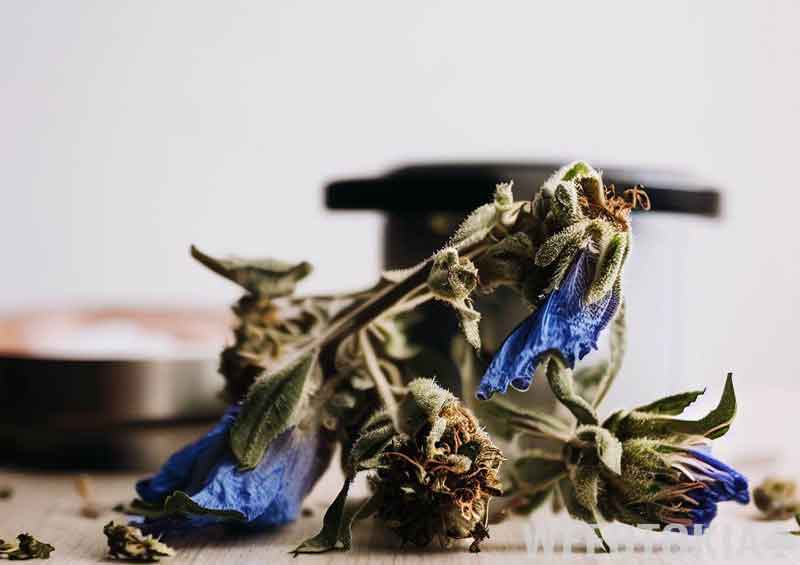
Skullcap can be smoked in a joint or a smoking pipe. The long leaves and flowers can both be smoked after they’re dried out. The flower burns at a slow rate, giving you time to relax and enjoy its aroma.
You don’t need to mix it with weed only; you can also mix it in with another smokable herb like Chamomile. That will give you a unique aroma, and you’ll enjoy the experience more.
How To Prepare & Smoke Herbs
Now that you know that herbs besides tobacco and marijuana can be smoked, you’ll need to know how to prepare and smoke them.
The first step is to dry them out. The herbs are not in a smokable state when they’re fresh because their flowers are hydrated and hard to light up. It takes 3-15 hours to fully dry them out depending on the type.
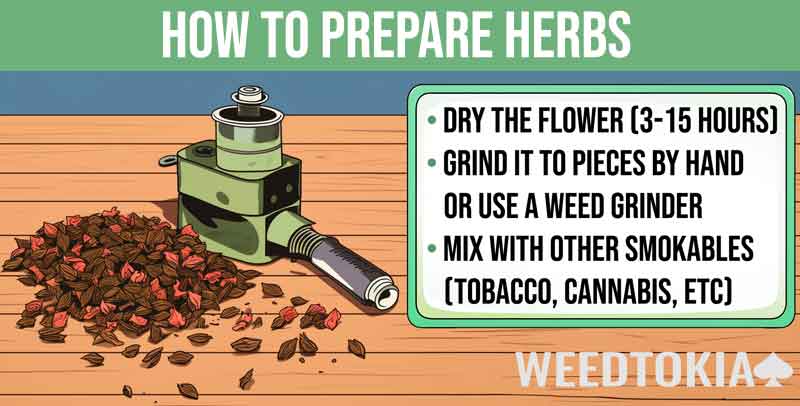
Roses petals might take up to 15 hours to dry out, while Wild Lettuce leaves can take only 10 hours. You’ll know they’re dry when you can crush them with your fingers.
After you’ve dried them out, they’re still not smokable. You must grind them in small pieces either manually (by hand) or automatically (using a grinder). Once they’re ground to tiny pieces, they’re ready for smoking.
You now only need to find a way to smoke them.
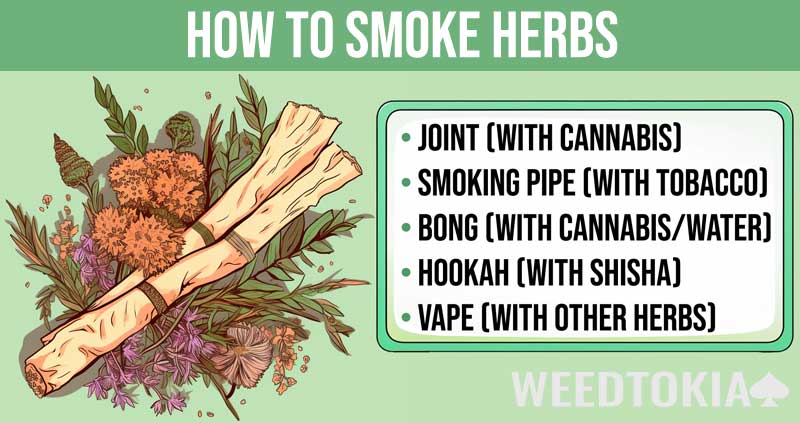
The more preferred method is to roll them in a joint. You can mix them with marijuana or tobacco inside a joint, roll it, and light it on fire. Each herb will have unique effects that can hit instantly.
Smoking herbs in a pipe is also popular, but for that, you’ll need to have your own smoking pipe. You can also stuff them in a bong chamber with cannabis and enjoy the benefits of both.
If you enjoy tobacco and like the taste of Shisha in a hookah, you can mix it in with herbs that smoothen the taste, like Mint. Some smokers prefer to mix different herbs and smoke them together.
Yes, it’s entirely possible to mix dried Rose Petals with Chamomile or other herbs in a joint.
Many of these herbs (i.e. Blue Lotus) have a history that is as long as, or even longer than, the herbs that we think of as “normal” to smoke. Unfortunately, since these other herbs are less popular, there has been less interest in studying them in a controlled setting to determine their effects.
Now that alternative smokable herbs are becoming popular, new research is underway, and we already know a great deal more than we did a decade ago. We hope you can use this guide to get you started on the idea of alternative smokable herbs, but don’t forget to do more independent research and verify that you have no negative reactions to these herbs before you start smoking them yourself.
Wrap Up:
That does it for this article. Let us know if you’ve smoked any herbs that we left off this list that you feel we should add.